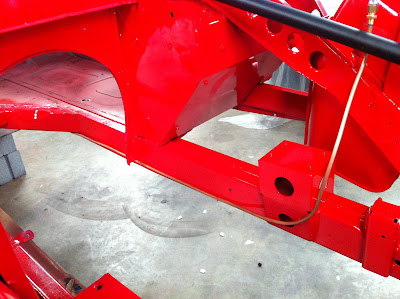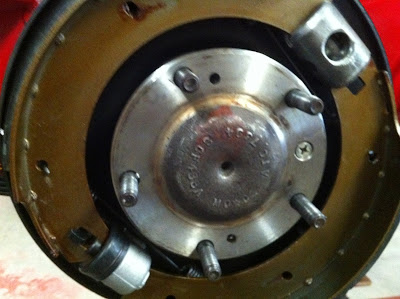 Restoring an engine and transmission is a greasy, rusty task. The disassembly, cleaning, painting and reassembly is time consuming to say the least. To the right is a photo of the engine and transmission during the disassembly process.
Restoring an engine and transmission is a greasy, rusty task. The disassembly, cleaning, painting and reassembly is time consuming to say the least. To the right is a photo of the engine and transmission during the disassembly process.
We painted them separately and then put them together. Then the fasteners were painted the same color as the engine. This was done because the engine and transmission assembly was painted after it was put together at the factory. No bright, shinny bolts are visible here.
No fluids will be added to this drive assembly until it is installed in the car. A priming tank will be used to charge the engine's oiling system. A priming tank is a pressurized vessel that is filled with oil and connected to the engine. When the pressure valve is opened oil is forced throughout the entire lubrication system before the engine ever turns over the first time. Failure to do this will cause excessive wear to the bushings, bearings and rings.
Hopefully we will be installing the engine toward the end of next week.
Later,
Tom McCurry



















































